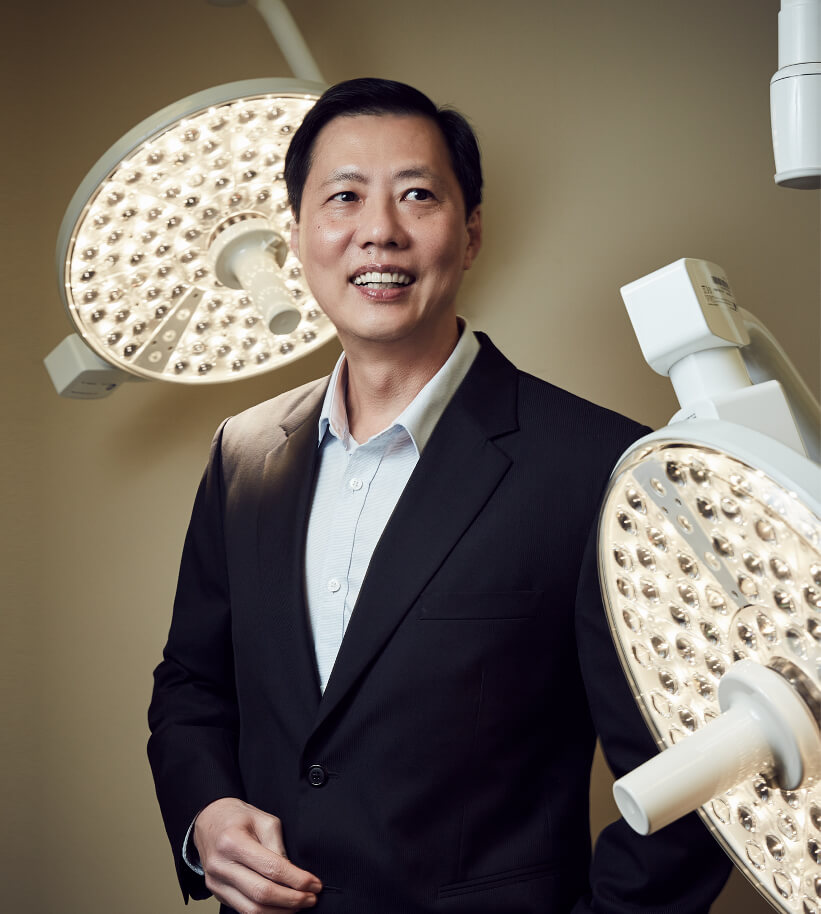
Ear, nose and throat cancers are a group of cancers that affect the soft tissues and other structures in the head and neck region. In Singapore, the top three types of head and neck cancers are nasopharyngeal cancer (nose cancer), thyroid cancer and lymphoid cancer (which often occurs in the neck).
Less common, but no less significant, is salivary gland cancer. This cancer occurs most commonly in the largest salivary glands, called the parotid glands, located just in front of the ears. Salivary gland growths can also develop in the submandibular glands, which are just below the jawline. In rare cases, tumours can grow in the salivary glands in the roof or base of the mouth, side of the tongue, lining of the lips, and inside the cheeks, nose, sinuses and voice box.
The risk of salivary gland tumours increases with smoking, a family history of the same cancer, age and previous exposure to radiation.
The risk of salivary gland tumours increases with smoking, a family history of the same cancer, age and previous exposure to radiation. Other risk factors include exposure to certain chemicals, such as those involved in rubber manufacturing, asbestos mining and plumbing. Previous infection by some viruses, including HIV and Epstein-Barr, is also linked to an increased risk.
The five key signs of salivary gland cancers are:
These signs may seem innocent, but could indicate a growth in the salivary glands. Timely removal is recommended even if the lump turns out to be benign (not cancerous). This is because there is a risk that a benign lump in the salivary gland may keep growing and become malignant (cancerous and able to spread) in the future. This underscores the importance of seeking medical attention should you experience any of the symptoms indicated.
To diagnose if a salivary gland growth is potentially cancerous or not, doctors conduct a biopsy, which involves obtaining tissues or cells that can be assessed microscopically. Usually, a head and neck expert would use a needle to obtain a tissue sample under the guidance of an ultrasound scan.
If the biopsy shows that the growth is cancerous, it warrants timely medical intervention. Surgery is the primary method of treatment, and it is often followed by radiation therapy for advanced cases. This twopronged approach removes the growth and the subsequent radiation kills any remaining cancer cells. Interestingly, chemotherapy, while effective for other head and neck cancers, does not work well on salivary gland cancer.
Surgery should also be considered for salivary gland tumours that are benign as they do continue to grow and could possibly turn malignant over time. Recovery takes about two weeks and most patients are able to return to work about two weeks after the surgery.

Senior Consultant Thyroid-Head & Neck Surgeon
MBBS (Singapore), FRCS (Edinburgh),
FRCS (Glasgow), FAMS (ORL)
Prof Goh is a Senior Consultant ENT specialist in Singapore with over 20 years’ experience, both locally and abroad in the UK and Canada under the Health Manpower Development Programme Award and the Singapore General Hospital (SGH) Scholarship.
A respected figure in his field, Prof Goh was the Head of the ENT Department at SGH and a founding member of the Asian Society of Head & Neck Oncology. Passionate about training up future ENT doctors, he teaches at the Duke-NUS Medical School and serves as Chairman on the Residency Advisory Committee at the Ministry of Health. A recipient of numerous service awards, Prof Goh’s dedication to his patients and the advancement of his field cannot be overstated.